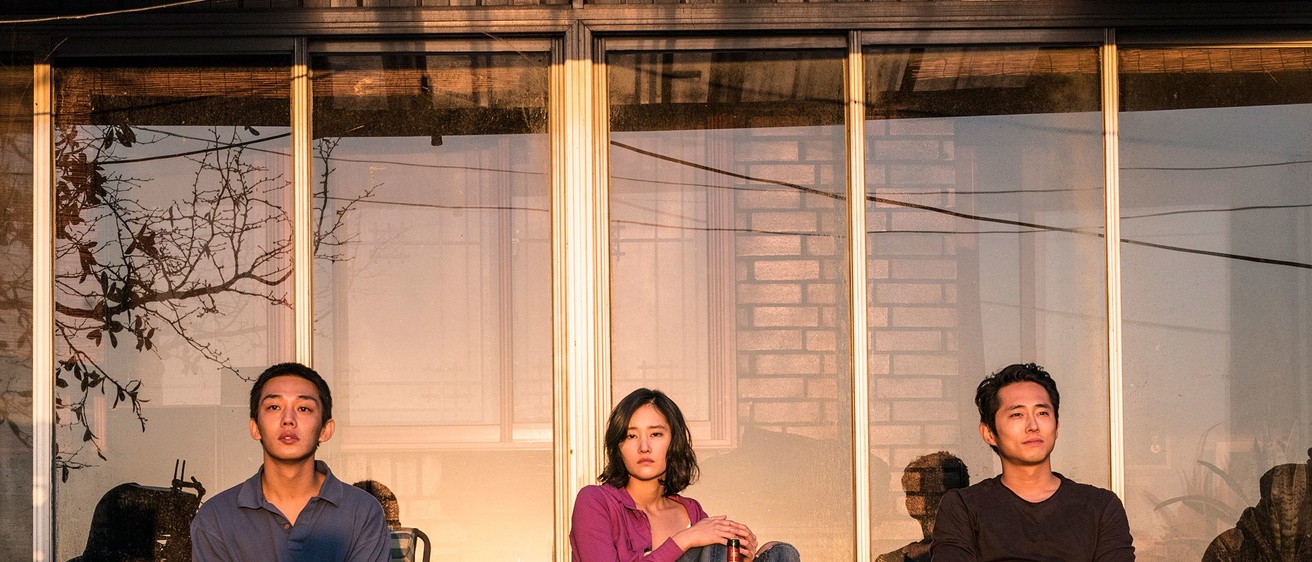By Carla Seravalli
We’re living in one of many adaptation-crazed times in film history: it seems that production companies have run out of new stories and are staking their whole existence on pre-existing source material. Though film adaptations of literature are most commonly assessed by their adherence to the text, interesting re-interpretations can be made by directors who deviate from it. This started weighing on my mind after I watched Lee Chang-dong’s Burning, (2018) which has enjoyed mainly glowing reviews since its release. I went into it not knowing it was adapted from a Haruki Murakami short story called “Barn Burning”. However once I realized this, I committed the cardinal sin of watching adaptation movies: I thought of the Murakami fiction I’d read before and judged the film accordingly. While there’s nothing wrong with fidelity to the film’s inspiration, this factor proved to be a source of conflict for me.
My opinion of Murakami’s fiction is one few readers I’ve met share. I find it extremely difficult to reconcile with his bizarre, self-flagellating sexual politics. The girl as concept and/or metaphor crutch is a regular in his stories, more often than not in the form of a traumatized love interest who loses interest in the passive, mopey protagonist and disappears. Frankly, it blows my mind that Murakami’s work can be lauded for sending readers spiraling into the fantastical unknown when it relies on tired gender norms so regularly. Is his work considered innovative simply because the virgin/chad dichotomy isn’t a recognized trope in Japanese culture, and he is exceptional for relying on Western tropes in Japan? (And inversely, do white people love Murakami so much because they can enjoy John Green-esque narratives that reinforce harmful gender stereotypes with the caveat that it’s eclectic because it’s Japanese?) And one more question: why are Murakami’s narrators so chiefly obsessed with Western art and culture? Why do they seem to listen to only Bach and Mozart, only love Hemingway and Faulkner? In both literature and film, what is askew (fantastical, surrealist, what have you) is meant to liberate us from established tropes and imagery.
Fortunately, Lee’s visuals accomplish just that, doing Murakami’s story as many favors as possible. It is a feat for a film to be so unsettling when its dominant colors are pure sky blue as filtered through spotless glass windows, sunshine yellow, and natural blues and greens. It features one of the most strangely powerful moments in a movie I’ve seen in a long time, which is when Jong-Soo (Yoo Ah-in) stares at a yellow stretch of wall in Shin Hae-mi’s (Jeon Jong-seo’s) closet while the two are having sex. He sees countless tiny specks of, well, something, skittering across the surface in no discernible pattern. Are they dusk particles illuminated by the sunlight coming in through the window? A swarm of white, ghostly bugs? Or are they filaments of detritus in Jong-Soo’s eye? As Burning’s creepy, alien ambience tirelessly lurches on, we learn that the answer does not matter; stranger things lie up ahead.
Perhaps the most iconic moment in the film happens on the driveway of Jong-soo’s rural home when, after a few hits of weed, Hae-mi removes her shirt and dances to sultry jazz, her shape a stark silhouette against the horizon. The sequence is absorbing, mystical, transcendent; like something out of Twin Peaks if it was set in South Korea. But I can’t help imagining how much more glorious the scene would be if Hae-mi were alone. Ben (Steven Yeun) and Jong-soo are out of the frame, but we know they’re behind her, watching. If we forget, we’re reminded later on when Jong-soo spits at her: “Why do you take off your clothes so easily? Whores do that.”
Still, some scenes go untarnished. The opening sequence sets the stage for a journey into the underbelly of a corrupt cultural psyche: the camera follows Jong-Soo from behind as he trudges through the streets, shouldering a delivery sack as vendors yell from their booths, and the distorted, pounding drone of bubblegum pop music alternates between overtaking and being overtaken by the shouts of pedestrians, the squeaking of their bicycle tires. It is a prime illustration of a consumerist hellscape, and a seamless translation of what Murakami does best.
In fact, Chang-dong is able to channel Murakami’s capacity for instilling everyday objects with eerie significance in full. Flip phones and cheap plastic watches gleam with inhuman cleanliness; Ben’s sleek Porsche looms slowly into scenes like a black harbinger of death. And I don’t know about the average viewer, but I’d pay to see another two-and-a-half-hour movie set in Hae-mi’s bedroom, one that allows us to see how the space functions when actually lived in, where the rumpled comforter tends to go when the bed is unmade, when the space is unmade, which things tend to go missing the most. Chang-dong has no problem following Murakami’s cues when it comes to the spaces male characters inhabit, but refrains from trying to extend the same significance it to his one female character, if she can be called a character at all.
Burning certainly has its triumphs: the one truly terrifying message it begins to plant is that Jong-soo’s feelings of personal victimization by the upper class elite that Ben and his friends represent could be unfounded, because they are not vapid or cruel; they’re normal, empathetic people, and that even victims can be sinister; cruel. However, this may have been a case where Chang-dong or screenwriter Oh Jungmi should have taken some liberties with the text. The sun is setting on the era in which we accept narratives that needlessly hinge on women as a vessel of a man’s emotional instability. Should it ever really be permissible to make one female character the nexus of all the spiritual, philosophical strangeness in the story, and then allow her to do nothing on screen but be an object of desire, and disappear without a trace?
